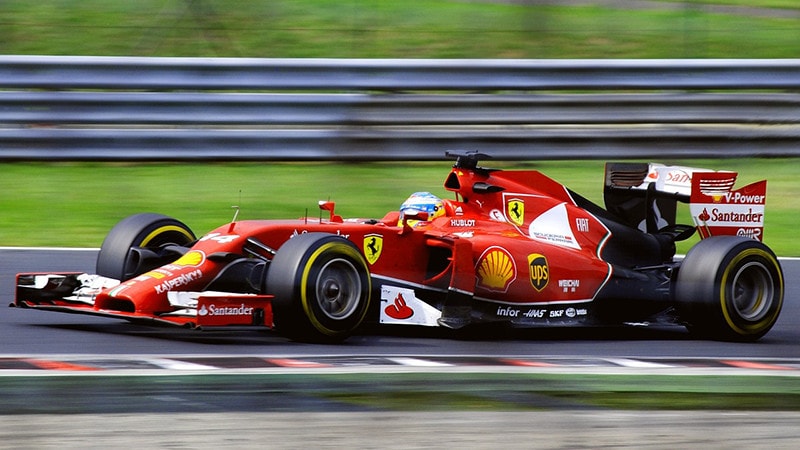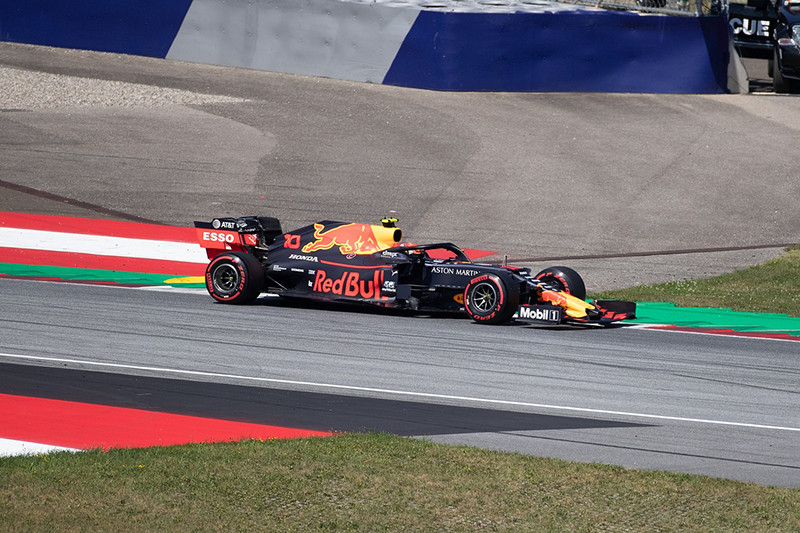What Engines Do F1 Cars Use? The Interesting Answer!
-
Codee Chessher
- Last updated:

If you’ve ever watched Formula-1 (F1) cars race, you’ve probably noticed that most cars look similar, if not identical. As it turns out, they’re pretty similar under the hood, too. All F1 cars use a 4-stroke, 1.6-liter, turbocharged V6 engine, but the manufacturer varies by car. Many people would probably be surprised to find out F1 uses V6 engines considering the massive amounts of horsepower they’re capable of.
F1 cars are capable of about 1,000 horsepower and speeds faster than 220 miles per hour. More impressively, they can go from 0–60 miles per hour in a mere 2.6 seconds. The engine itself only supplies about 850 out of the 1,000 horsepower, with the remainder coming from the Energy Recovery System. This system has evolved over the years, but today it can store mechanical energy and heat to convert into electrical power, providing valuable horsepower.
Are All F1 Cars the Same?
While we just established that F1 cars have the same engine specs, it’s simply not true that all of them are the same. They may have the same specifications, but every F1 team develops their car in a different way. While subtle, these minor differences dramatically affect how each car performs in a race.
They use similar aerodynamics and might all look similar, but F1 teams have some leeway in their chassis specs. Some teams like Red Bull have a markedly shorter wheelbase, which enhances performance in tight, slower-paced races. Others, like Mercedes, take advantage of a longer wheelbase to maximize straight line speed, which is better for more open or drag-style races.

About F1 Cars
F1 cars are instantly recognizable—they’re low-slung, single-seaters with a fancy (and usually sponsored) wing in the back. The wing isn’t just for show, though. The wing serves an important role in improving the car’s aerodynamic properties to optimize performance.
The cars are made of lightweight but extremely strong carbon fiber, which is five times lighter than steel. Along with the powerful engine, this choice in body materials is responsible for F1 cars’ unbelievable top speeds.
Who Makes the Engines for F1 Cars?
Just four companies produce the engines for F1 cars, each with their own design philosophy, strengths, and weaknesses. These companies are Mercedes, Renault, Honda, and Ferrari. From variances in air cooling tech, engine layout, and weight reduction techniques, each company has its tricks to give them an edge over the competition.

How Have F1 Cars Changed Over the Years?
The first winner of an F1 Grand Prix was an Alfa Romeo 158, which had a front-engined, inline, 8-cylinder engine. This is in stark contrast to modern F1 cars. Today, engines are typically in the rear of the car, and inline, 8-cylinder engines were scrapped in favor of turbocharged V6 engines.
The most important technological advancement that made this possible was the Kinetic Energy Recovery System, which has gone by different names over the years. By sizing down to a V6 and taking advantage of this new hybrid tech, F1 cars from 2009 onward have become way more efficient and powerful than their ancestors.
Conclusion
Formula 1 is the highest level of international racing, and it’s no surprise that their cars are cutting edge. Capable of more than 1,000 horsepower, F1 cars vary slightly by manufacturer and team but share similar specs within rigid guidelines.
Featured Image Credit: urv, Pixabay
Contents
